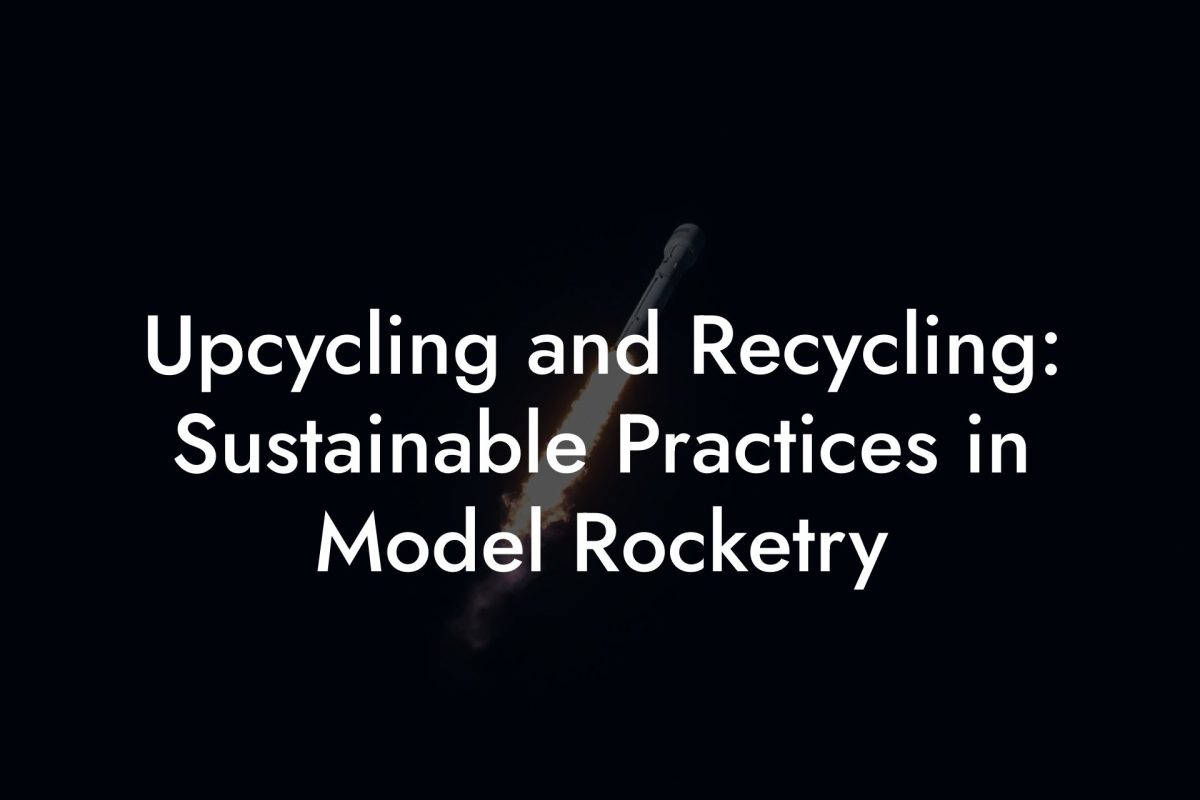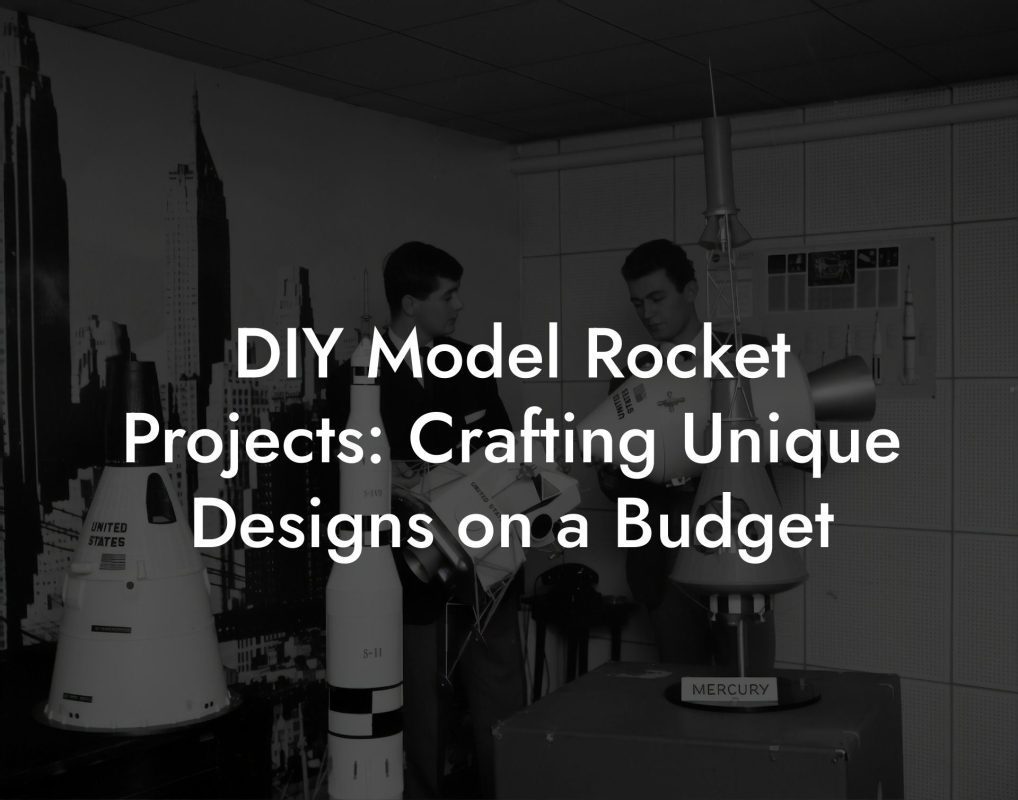Your model rocket is more than just a vessel for thrust and altitude, it's an expression of your creativity and personality. "Custom Paint Jobs: Personalizing Your Model Rocket for Maximum Impact" is your guide to transforming a standard rocket into a one-of-a-kind masterpiece. With tips on design, color selection, and finishing techniques, you'll learn how to create a stunning visual statement that not only looks great but can also subtly enhance aerodynamic performance.
Quick Links to Useful Sections
- Introduction: The Art of Customization
- Choosing Your Color Palette and Design Style
- Techniques for a Flawless Finish
- Airbrushing
- Hand-Painting
- Decals and Vinyl Wraps
- Priming and Sealing
- Step-by-Step Custom Paint Job Process
- Step 1: Preparation
- Step 2: Priming
- Step 3: Base Coating
- Step 4: Detailing
- Step 5: Sealing
- Step 6: Final Touches
- Model Rocket DIY Custom Paint FAQs
- Your Next Launch: Make a Statement with a Custom Rocket
Introduction: The Art of Customization
Custom paint jobs are the final flourish that turns a well-built rocket into a personalized work of art. Whether you’re aiming for bold, eye-catching graphics or a sleek, minimalist design, a custom paint job can make your rocket stand out on the launch pad and in the sky. Beyond aesthetics, a quality finish can help protect your rocket’s surface and reduce drag by creating a smooth exterior.
In this guide, we’ll explore various techniques, from airbrushing and hand-painting to the use of decals and vinyl wraps, that empower you to design a paint job that reflects your unique style while maximizing impact.
Choosing Your Color Palette and Design Style
The first step in creating a custom paint job is selecting a color palette and design that resonate with your vision. Consider these factors:
- Bold vs. Subtle: Decide whether you want vibrant, eye-catching colors or a more subdued, sleek look.
- Theme and Inspiration: Whether it’s futuristic, retro, or nature-inspired, choose a theme that reflects your personality.
- Aerodynamic Considerations: Smooth, uniform finishes can reduce minor surface imperfections and may help minimize drag.
Spend time brainstorming and sketching your ideas. Online inspiration boards, design software, or even a simple mood board can help you refine your vision before you pick up a brush.
Looking For The Best Model Rocket Kits? You'll Love These:
Techniques for a Flawless Finish
Achieving a professional-looking paint job on your model rocket involves a blend of preparation, technique, and the right tools.
Airbrushing
Airbrushing is a popular technique among rocketeers because it provides a smooth, even finish with fine control over gradients and details. If you have access to an airbrush kit, practice on scrap material first to master the technique.
Hand-Painting
Hand-painting allows for more artistic freedom and intricate detail. Use high-quality acrylic paints and fine brushes to add highlights, textures, or custom designs. A steady hand and patience are key to avoiding streaks or uneven coverage.
Decals and Vinyl Wraps
For those who prefer a less labor-intensive option, decals and vinyl wraps offer a quick way to add professional graphics and patterns. These can be printed with custom designs or purchased pre-made, then carefully applied to the rocket’s surface.
Priming and Sealing
Regardless of your painting method, using a primer ensures that your paint adheres well and provides a uniform base color. After painting, applying a clear coat or sealant protects the finish from chipping and weather-related wear.
Step-by-Step Custom Paint Job Process
Follow these steps to achieve a custom paint job that makes your rocket truly yours:
Step 1: Preparation
Clean the rocket’s surface thoroughly to remove dust, oils, and debris. Lightly sand the area to create a smooth base for the primer. Mask off areas you don’t want to paint using tape.
Step 2: Priming
Apply a high-quality primer evenly across the surface. This creates a uniform base that improves paint adhesion and helps achieve an even finish.
Step 3: Base Coating
Once the primer is dry, apply your base coat using either an airbrush or a brush, depending on your chosen technique. Allow the base coat to dry completely before moving on.
Step 4: Detailing
Add your custom details, this could involve gradients, patterns, or custom graphics. Use masking tape to achieve clean lines and consider using stencils for consistent designs.
Step 5: Sealing
Finish with a clear coat or sealant to protect your work from the elements and minor abrasions. Ensure the sealant is compatible with your paint type for best results.
Step 6: Final Touches
Remove any masking tape carefully, and inspect your rocket for any touch-ups needed. Allow it to cure completely before handling it for a launch.
Model Rocket DIY Custom Paint FAQs
Here are some frequently asked questions to help you perfect your custom paint job:
1. What is the most important step in achieving a smooth paint finish?
Proper surface preparation, including cleaning and sanding, is crucial for a smooth finish.
2. Which technique is best for large, even areas?
Airbrushing is excellent for covering large areas evenly and creating smooth gradients.
3. How do decals compare to hand-painting?
Decals offer a quick and consistent way to apply intricate designs, while hand-painting allows for more personalized and artistic touches.
4. Is priming really necessary?
Yes, priming improves paint adhesion and ensures a uniform base, leading to a better overall finish.
5. How can I protect my paint job from chipping?
Applying a clear sealant or topcoat will protect your paint from chipping and environmental wear.
6. What type of paint is recommended for model rockets?
High-quality acrylic paints are recommended because they dry quickly, provide vibrant colors, and are easy to work with.
7. Can I mix techniques, like airbrushing and hand-painting?
Absolutely, many rocketeers combine techniques to achieve the desired effect and add unique details.
8. How do I ensure that my custom paint job doesn’t affect the rocket’s performance?
A smooth, even finish can actually reduce drag, and proper application of primer and sealant helps maintain the rocket’s integrity.
9. What are common pitfalls to avoid in custom painting?
Avoid rushing the preparation process, applying too many layers too quickly, and using incompatible materials. Patience and careful planning are key.
10. Where can I find inspiration for custom designs?
Look for inspiration on online forums, rocketry blogs, social media platforms like Instagram, and in aerospace design publications.
Your Next Launch: Make a Statement with a Custom Rocket
A custom paint job is your opportunity to express your unique vision and make your rocket truly stand out. With careful planning, the right techniques, and attention to detail, you can transform a basic rocket into a personalized masterpiece that not only performs well but also turns heads on the launch pad.
Embrace the art of customization, let your creativity run wild, and prepare to launch a rocket that reflects your passion and ingenuity. Your next launch is your canvas, paint it bold, and let it soar!
Looking For The Best Model Rocket Kits? You'll Love These:
Useful Interruption: Dive deeper into the world of Model Rockets with our most popular sections. If there is anything you think is missing or anything you would love for us to write about, just give us a shout.
- Getting Started & Basics With Model Rockets
- Model Rocket Design, Build & Customization
- Model Rocket Propulsion & Engine Technology
- Model Rocket Launch Techniques & Recovery
- Model Rocket Advanced Rocketry & Innovations
- Model Rocket DIY and Customization
- Model Rocket Equipment Reviews & Digital Tools
- Community, Competitions & Education
- Model Rocket Troubleshooting & FAQs
- Model Rocket Bonus/Seasonal & Niche Topics
A group of model rocket enthusiasts gathered at a field for their weekly launch event. Among them was Dave, a seasoned builder known for pushing the limits of hobby rocketry. This time, he had outdone himself.
“Ladies and gentlemen,” Dave announced, dramatically pulling a cloth off his latest creation, “I present to you: The Kraken!”
The crowd gasped. This wasn’t just a model rocket, it was a monster. The thing stood 8 feet tall, had six clustered engines, and was covered in enough duct tape to qualify as a classified aerospace project.
“Dave,” muttered Steve, the cautious safety officer, “Have you, uh… done the math on this?”
“Math?” Dave scoffed. “I built it in my garage at 3 a.m. with parts from eBay. This is an art piece, Steve.”
The countdown began.
5…
4…
3…
2…
1…
The engines ignited with a BOOM, and The Kraken shot up… kind of. It immediately did a violent barrel roll, narrowly missing the spectators before skyrocketing at an angle that could only be described as “legally questionable.”
The crowd collectively ducked as The Kraken flew straight over the adjacent cornfield, where Old Man Jenkins, the grumpiest farmer in town, was minding his business.
KABOOM!
The rocket disappeared behind the barn. A moment later, a flaming piece of Estes igniter wire landed at Steve’s feet. The silence was deafening.
And then, an unmistakable sound echoed across the field.
Jenkins’ shotgun being cocked.
“DAVE!!!” Steve shouted. “RUN.”
And that was the day Dave invented the first-ever biologically powered rocket booster: pure adrenaline.
To this day, nobody knows where The Kraken landed, but legend has it, it still haunts the skies, terrifying unsuspecting drones and low-flying birds.






